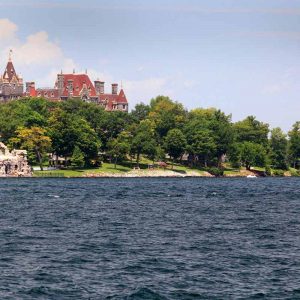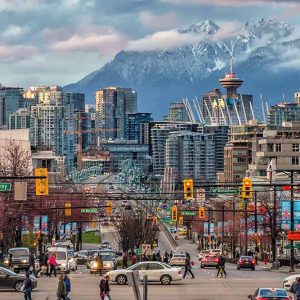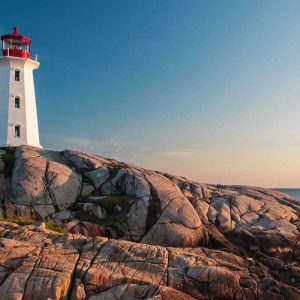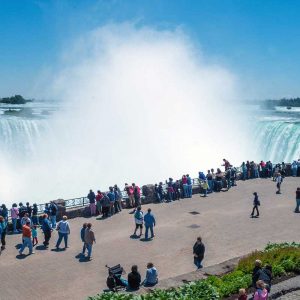Last Updated on June 27, 2025


Québec City is a charming and historic city in Canada, where you can experience the culture and heritage of French Canada. It is the only walled city in North America and a UNESCO World Heritage site. You can explore its old-world architecture, visit its iconic landmarks, and enjoy its seasonal activities. Québec City is a destination that will enchant you with its beauty and history.
In this article, we’ll highlight some of the top activities to check out in this vibrant and bustling city.
The U.S. News & World Report Travel Rankings
#2 in Best Christmas Vacations
#5 in Best Family Vacations in Canada
#6 in Best Cheap Winter Vacations
#6 in Best Places to Visit in Canada
#15 in Best Places to Visit in December
#15 in Best Winter Family Vacations
#15 in Best Weekend Getaways
#17 in Best Winter Vacations
Best Hotels in Quebec City
#1 Auberge Saint-Antoine
#2 Fairmont Le Château Frontenac
#3 Hôtel Le Germain Québec
Best Months to Visit
June through September
December through February
Find Flight Best and Lowest Deals
| QUICK LINKS | |
|---|---|
| What to Do in Québec City? | 10 Fun Things to Do in Québec City |
| Quebec City Travel Tips and Guides | More Facts About Québec City |

What to Do in Quebec City?
Quebec City is located in the province of Quebec, Canada, along the Saint Lawrence River. It is situated in the eastern part of the province, about 250 kilometers northeast of Montreal, with French as the official language.
Quebec City stands as a bastion of French culture and North American history. With its cobblestone streets, 17th-century architecture, and fortified city walls, Quebec City exudes an old-world charm that transports visitors back in time. The city’s rich heritage is palpable in every corner, from the iconic Château Frontenac towering over the skyline to the lively Quartier Petit Champlain, where artisans and street performers bring the streets to life. Steeped in European elegance yet distinctly Canadian, Quebec City offers a unique fusion of cultures that captivates travelers from around the globe.
When visiting Quebec City, there is no shortage of enchanting experiences to indulge in. Begin your journey by exploring the historic heart of the city within the walls of Old Quebec, a UNESCO World Heritage site brimming with landmarks such as the Citadelle of Quebec and the Basilica of Sainte-Anne-de-Beaupré. Stroll along Dufferin Terrace for panoramic views of the river and Lower Town, then delve into the city’s culinary scene, savoring traditional Québécois dishes like poutine and tourtière. For a dose of culture, immerse yourself in the vibrant arts scene at Place Royale or attend one of the many festivals that animate the city throughout the year, celebrating everything from music and film to winter sports and culinary delights. Whether wandering through historic streets, savoring delectable cuisine, or marveling at architectural wonders, Quebec City promises an unforgettable journey steeped in history and charm.
Quebec City Travel Tips and Guides
Best Time to Visit
There is no definitive answer to this question, as different seasons offer different attractions and experiences in Quebec City. However, here are some general guidelines to help you decide:
Summer Season: If you enjoy warm weather, outdoor activities, and festivals, the best time to visit Quebec City is summer (June to September). This is also the peak tourist season, so expect higher prices and crowds.
Fall Season: If you want to see the stunning fall foliage, the best time to visit Quebec City is early October. However, this is also a popular time for cruise ships, so you may encounter some congestion in the Old Quebec area.
Winter Season: If you love winter sports, snow, and ice sculptures, the best time to visit Quebec City is winter (December to February). This is when the city hosts its famous Winter Carnival, one of the largest and oldest in the world. Be prepared for cold temperatures and dress warmly.
Spring Season: If you prefer smaller crowds, lower prices, and milder weather, the best time to visit Quebec City is spring (March to May) or late fall (November). These are the shoulder seasons, when you can still enjoy some outdoor activities and cultural events, such as the sugaring-off season and the German Christmas Market.
Ultimately, the best time to visit Quebec City depends on your personal preferences and interests. No matter when you go, you will find something to enjoy in this charming and historic city.
How to Get Around Quebec City
There are many ways to get around Quebec City, depending on your preferences, budget, and destination. Here are some of the most common options:
Walking: Walking is a great way to explore the historic and scenic areas of Quebec City, especially the Old Quebec and Petit-Champlain districts. However, be prepared for some steep hills and stairs, and wear comfortable shoes. Walking is also eco-friendly and free!
Public Transit: The public transit system in Quebec City, called RTC, operates buses that cover most of the city and its suburbs. You can buy tickets or passes at convenience stores, vending machines, or online. A single ride costs $3.75 CAD, and a day pass costs $9.50 CAD. You can also use the RTC Nomade app to plan your trips, check schedules, and track buses in real time.
Taxi: Taxis are easy to find in Quebec City, especially near hotels, attractions, and transportation hubs. You can also call one of the taxi companies or use the Uber app. The taxi fare between the airport and the city centre is a flat $41.40 CAD. Otherwise, the fare is based on a meter that starts at $3.45 CAD and increases by $1.70 CAD per kilometre.
Bike: Biking is another fun and eco-friendly way to get around Quebec City. There are many bike paths and trails that follow the river, the parks, and the suburbs. You can rent a bike from one of the bike shops or use the Cyclo Services bike-sharing system. The rental rates vary depending on the type and duration of the bike. The Cyclo Services system costs $5 CAD per hour or $15 CAD per day.
Ferry: The ferry is a convenient and scenic way to cross the St. Lawrence River between Quebec City and Levis. The ferry terminal is located in the Old Port area, near the Chateau Frontenac. The ferry runs every 20 to 30 minutes, depending on the season and time of day. The fare is $4.10 CAD for adults, $2.05 CAD for children, and $11.90 CAD for cars.
Shuttle: If you want to visit some of the attractions outside Quebec City, such as Montmorency Falls, Ile d’Orleans, or Wendake, you can use one of the shuttle services that depart from the city centre. The shuttle rates and schedules vary depending on the destination and the provider. You can book your shuttle online or at the tourist information centres.
10 Fun Things to Do in Quebec City
Below will explain more in details each on the list, so keep on reading.
1. Explore Old Quebec (Vieux-Québec)
Old Quebec (Vieux-Québec) is the historic heart of Quebec City, where you can walk along the fortified walls that surround the UNESCO World Heritage Site. The walls, which date back to the 17th and 18th centuries, are the only remaining fortified city walls in North America. They offer a glimpse into the military and colonial history of Quebec, as well as a panoramic view of the St. Lawrence River and the surrounding landscape.
As you explore the cobblestone streets of Old Quebec, you can admire the view of the Château Frontenac, the most photographed hotel in the world. The hotel, which was built in 1893, is a landmark of the city and a symbol of its elegance and charm. You can also marvel at the architecture of the old buildings, which reflect the French, British, and American influences that shaped the city over the centuries. Old Quebec is full of local shops, art galleries, bistros, and museums that showcase the rich culture and history of the city. You can find everything from souvenirs, antiques, and handicrafts to fine art, gourmet food, and live music.
2. Experience the Montmorency Falls Park
Montmorency Falls Park is a natural wonder that is located just a few minutes away from Quebec City. The park features the Montmorency Falls, which are higher than the Niagara Falls by 30 meters. The falls are formed by the Montmorency River, which plunges over the edge of the cliff into a basin below. The falls create a spectacular sight, especially in the winter when they freeze and form a huge ice cone.
The park offers various ways to see the falls from different perspectives. You can take a cable car to the top of the cliff, where you can enjoy a panoramic view of the falls and the river. You can also cross the suspension bridge over the falls, which gives you a thrilling experience of being close to the water. Alternatively, you can walk along the trails at the base of the falls, where you can feel the mist and the roar of the falls. The park also has other attractions, such as a picnic area, a bike path, and a zipline adventure that lets you soar over the falls.
3. Walk along Dufferin Terrace for scenic views
Dufferin Terrace is a popular promenade that offers a stunning view of the river and the Château Frontenac. The terrace, which is located on the edge of the cliff above the Lower Town, is a great place to admire the beauty and history of Quebec City. The terrace is named after Lord Dufferin, a governor general of Canada who loved Quebec City and contributed to its preservation and development in the 19th century. He also initiated the construction of the terrace, which was completed in 1879.
You can stroll along the terrace, which is about 425 meters long, and enjoy the fresh air and the scenery. In the summer, you can watch live entertainment, such as musicians, acrobats, and street performers, who add to the lively atmosphere of the terrace. In the winter, you can try the toboggan run, which is a fun and thrilling activity that dates back to 1884. You can also visit the remains of the Saint-Louis Forts and Châteaux, which lie beneath the terrace. These are the archaeological sites of the former residences of the French and British governors, which were destroyed by fire and war. You can learn more about the history and significance of these sites at the interpretation center.
4. Explore Place Royale
Place Royale is the birthplace of Quebec City, where Samuel de Champlain founded the first permanent settlement in 1608. It is a historic square that is located in the Lower Town, near the riverfront. It is one of the oldest and most authentic places in North America, where you can feel the atmosphere of the 17th and 18th centuries. You can see the original layout of the square, which was designed by Champlain, and the stone buildings that surround it.
One of the highlights of Place Royale is the Notre-Dame-des-Victoires, the oldest stone church in North America. The church was built in 1688, and survived several attacks and fires. It is dedicated to the Virgin Mary, who is believed to have protected the city from the British invasion. You can also see the mural of Quebec City’s history, which covers the entire wall of a building facing the square. The mural depicts the evolution of the city from its origins to the present day, and features more than 400 years of history and 100 historical figures. Place Royale is a testament to the French and British influences that shaped the city, and a must-see attraction for any visitor.
5. Visit the Notre-Dame de Québec Basilica-Cathedral
Sure, I can expand that sentence into two paragraphs for you. Here is one possible way to do it:
Notre-Dame de Québec Basilica-Cathedral is the oldest Catholic parish in North America, and the first cathedral to be built in the New World. It was founded in 1647, and has been rebuilt several times due to fires and wars. The current basilica-cathedral, which dates back to 1925, is a magnificent example of neo-classical architecture, with a dome, a bell tower, and a facade inspired by the Saint Peter’s Basilica in Rome.
The interior of the basilica-cathedral is richly decorated with paintings, sculptures, and stained glass windows that depict the history and the faith of the people of Quebec. The basilica-cathedral also houses the Holy Door, which is one of the seven Holy Doors in the world, and the only one in North America. The Holy Door is opened only during special occasions, such as the Jubilee Year, and grants spiritual benefits to those who pass through it. The basilica-cathedral is also the resting place of several bishops and governors of Quebec, including François de Laval, the first bishop of New France. The basilica-cathedral is a symbol of the religious and cultural heritage of Quebec City, and a place of worship and pilgrimage for millions of visitors.
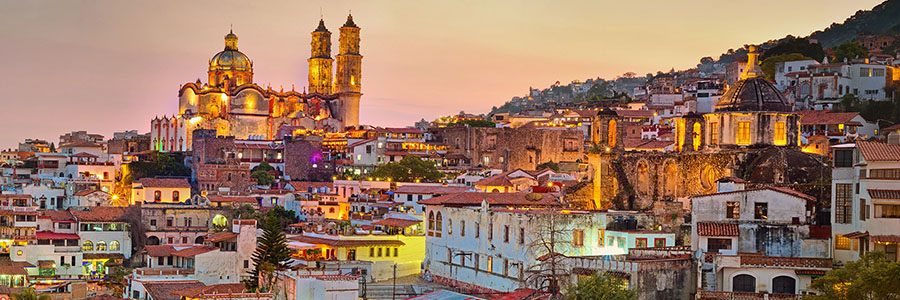
6. Tour La Citadelle de Québec
La Citadelle de Québec is the largest British fortress in North America, and the official residence of the Governor General of Canada. The fortress, which is also known as the Gibraltar of America, was built between 1820 and 1850 to protect Quebec City from a possible American invasion. It is located on the top of Cap Diamant, the highest point of the city, overlooking the St. Lawrence River and the Old Quebec. The fortress is part of the UNESCO World Heritage Site of the Historic District of Old Québec.
You can take a guided tour of the fortress, which includes the museum, the chapel, the governor’s residence, and the changing of the guard ceremony. The museum displays the history and the artifacts of the fortress and the Royal 22nd Regiment, the only French-speaking infantry regiment in the Canadian Armed Forces. The chapel is a small and elegant building that serves as a place of worship for the soldiers and their families. The governor’s residence is a luxurious and spacious mansion that hosts official events and dignitaries. The changing of the guard ceremony is a daily ritual that showcases the discipline and the tradition of the regiment. You can also learn about the history and the role of the Royal 22nd Regiment, which was founded in 1914 and has participated in several wars and peacekeeping missions.
7. Battlefields Park (Parc des Champs-de-Bataille)
The Battlefields Park also called as Plains of Abraham Park is a historic and scenic attraction in Quebec City, Canada. It was the location of a pivotal battle in 1759, when the British army, led by General James Wolfe, defeated the French forces, commanded by General Louis-Joseph de Montcalm, and gained control of Quebec. The battle was part of the Seven Years’ War, which shaped the fate of North America and the world. Today, the park preserves the memory of this event and honors the soldiers who fought and died on both sides.
Visitors to the park can learn more about the Battle of the Plains of Abraham and its consequences at the Plains of Abraham Museum, which offers interactive exhibits and multimedia presentations. The museum also showcases the cultural and natural heritage of the park, which spans 108 hectares and includes gardens, monuments, sculptures, and trails. The park is a popular destination for outdoor activities, such as walking, cycling, skiing, and skating. It also hosts various events and festivals throughout the year, such as the Winter Carnival and the Quebec City Summer Festival.
8. Wander through Quartier Petit Champlain
Quartier Petit Champlain is a small commercial district in the lower town of Old Quebec, near Place Royale. It is one of the oldest and most charming streets in North America, lined with unique boutiques and restaurants. The district is also rich in history, as it was the site of the first French settlement in 1608, and the location of a decisive battle in 1759. You can admire the architecture, the murals, and the monuments that reflect the heritage of the area. You can also enjoy the festive decorations and the funicular that connects the lower town with the upper town.
The district is named after Samuel de Champlain, the founder of Quebec City and the father of New France. He built his first habitation on the site, which later became a trading post and a fort. The district was also the scene of the Battle of Quebec, when the British army, led by General James Wolfe, stormed the cliffs and defeated the French forces, commanded by General Louis-Joseph de Montcalm. The battle was a turning point in the Seven Years’ War, which determined the fate of North America. Today, the district is a lively and picturesque place, where you can experience the culture and the charm of Quebec.
9. Basilica of Sainte-Anne-de-Beaupre
The Basilica of Sainte-Anne-de-Beaupre is a majestic church along the Saint Lawrence River, about 30 kilometres east of Quebec City. It is one of the eight national shrines of Canada, and a popular pilgrimage site for Catholics. The basilica is dedicated to Saint Anne, the patron saint of sailors and the grandmother of Jesus. It is said to have many miracles of healing the sick and the disabled. The basilica was built in 1926, after the previous church was destroyed by a fire. It has a stunning interior, with stained glass windows, mosaics, sculptures, and relics.
The basilica attracts millions of visitors every year, who come to pray, light candles, and seek blessings from Saint Anne. Many of them also bring crutches, canes, and other objects as tokens of gratitude for the cures they received. The basilica has a collection of these items, which testify to the power of faith and the intercession of Saint Anne. The basilica also hosts various events and celebrations, such as the annual novena, the feast day of Saint Anne, and the candlelight procession. The basilica is a place of beauty, spirituality, and history.
10. Visit the Musée de la Civilisation
The Musée de la Civilisation is a museum located in Quebec City, near the Saint Lawrence River. It is a place of discovery and reflection on the human experience, from the past to the present. The museum has permanent and temporary exhibitions that explore various aspects of culture, society, history, and science. Some of the exhibitions include: Word is Bond, about the sound of rap in Quebec; Wrestling, about the history and the culture of wrestling in Quebec; and People of Quebec, about the identity and the diversity of Quebecers. The museum also offers activities, workshops, shows, and events for all ages.
The museum was founded in 1984, and moved to its current location in 1988. It is housed in a modern building that contrasts with the historic surroundings of Old Quebec. The museum has a collection of over one million objects and documents, which are displayed in innovative and interactive ways. The museum aims to promote dialogue and understanding among different cultures and communities, and to foster curiosity and creativity among its visitors. The museum is a dynamic and engaging place, where you can learn, have fun, and be inspired.
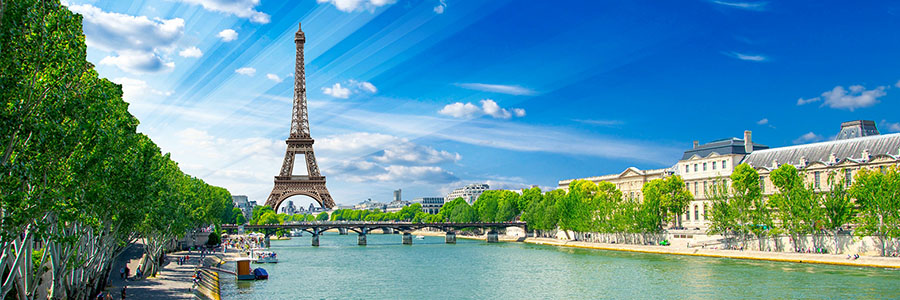
More Facts About Quebec City
What Time Is It in Quebec City
Quebec City operates in the Eastern Time Zone. This means that the local time in Quebec City is typically either Eastern Standard Time (EST) or Eastern Daylight Time (EDT), depending on the season. When Eastern Standard Time is in effect (usually from early November to early March), Quebec City is UTC-5. During Eastern Daylight Time (typically from early March to early November), Quebec City is UTC-4. It’s worth checking the current date to determine whether Quebec City is observing standard or daylight saving time to get the exact time.
How Old is Quebec City
Quebec City is one of the oldest European settlements in North America. It was founded by Samuel de Champlain on 3 July 1608, as a permanent trading post. As of 2023, it is approximately 415 years old.
How Long is the Flight from Toronto to Quebec City
The travel time from Toronto to Quebec City varies depending on the mode of transportation you choose.
- Airplane: The flight time from Toronto to Quebec City is about 1 hour and 25 minutes. The flight distance is about 731 kilometers. There are several airlines that fly this route, such as Air Canada, Porter Airlines, Air Transat, Flair Airlines, and Sky Jet.
- Car: The driving time from Toronto to Quebec City is about 7 hours and 48 minutes. The driving distance is about 803 kilometers. The best road trip route from Toronto to Quebec City follows the St Lawrence River and passes through Kingston, Ottawa, and Montreal.
- Bus: The bus time from Toronto to Quebec City is about 10 hours and 49 minutes. The bus distance is about 806 kilometers. There are three bus operators that offer this service, Megabus Canada, Intercar, and Red Arrow.
- Train: The train time from Toronto to Quebec City is about 9 hours and 44 minutes. The train distance is about 800 kilometers. There are two train operators that run this route, VIA Rail and Orléans Express.
It’s important to check schedules, prices, and other factors to decide which mode of transportation best suits your needs for the Toronto to Quebec City journey.
How Many People Live in Quebec City
According to the July 2021 data, the population of Quebec City was 556,070. This makes it the seventh-largest metropolitan area and the second-largest city in Quebec after Montreal. The population density of Quebec City is 228.6 inhabitants per square kilometer (592/square mile)
How Big is Quebec City
Quebec City has an area of 485.18 km². It is the eleventh-largest city in Canada. It is also the second-largest city in the province of Quebec, after Montreal.
What is the Temperature in Quebec City
According to the climate data of Quebec City, the yearly mean temperature is 4.2 °C (39.5 °F). The coldest month is January, with an average temperature of -11.1 °C (12 °F), and the warmest month is July, with an average temperature of 19.8 °C (67.7 °F). The yearly precipitation is 1,190 millimeters (46.9 inches), with July being the wettest month and February and March being the driest months. The city also receives about 3 meters (10 feet) of snow per year, usually from November to early April.
Statistics and Information Sources:
- US News Travel Guide – Quebec City, Canada
- Link: https://travel.usnews.com/Quebec_City_Canada/



